
Survivor Stories
Emaya Dilworth - Stroke
Like many mothers, Emaya Dilworth, 44, enjoys baking and caring for her
four children, who range in age from 10 to 24. The difference is that
Emaya is doing it despite a massive stroke two years ago that left her
partially paralyzed and unable to talk or swallow.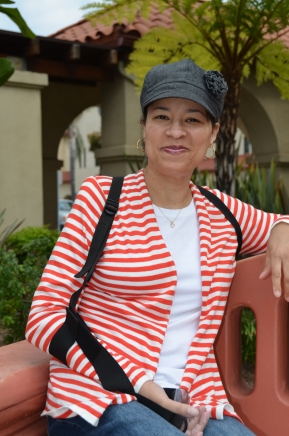
Against all odds, including just a five percent chance of a meaningful recovery, Emaya is thriving, thanks to her family, Pomona Valley Hospital Medical Center (PVHMC) and her own determination.
Paramedics rushed Emaya to PVHMC in 2014 when her mother found her unresponsive one morning. Tests showed that a large stroke had affected the entire left side of Emaya’s brain.
“Because of swelling, Emaya had a portion of her skull removed so the brain would have a place to expand,” said her father, Carl Douglas. “The damage to her brain was quite extensive. We were told Emaya had a 10 percent chance of never speaking again and a 5 percent chance of not remaining in a vegetative state.”
But after intensive stroke treatment at PVHMC’s Stead Heart & Vascular Center, followed by weeks of inpatient rehabilitation at another facility, Emaya slowly began to improve. After many more months of outpatient rehabilitation and encouragement from the PVHMC Stroke Support Group, she progressed from needing round-the-clock care from her parents to living independently at home with three of her children (the oldest is in the Air Force).
“She can talk, walks with a cane, and lives alone without the need for full-time help from family or friends,” said Katrina Woolfolk, PVHMC Stroke Support Group Facilitator. “When she first came to us, she was wheeled in by her father. She had very little speech and a lot of difficulty with word-finding. She now walks into stroke support and her speech is remarkably improved. She is happy, upbeat and feels truly blessed to be alive. Stroke recovery is a lifelong journey filled with highs and lows and Emaya is an outstanding example of our stroke support motto: “We do Survive, We do Recover, We do Thrive.”
PVHMC offers a multitude of resources that are available to all stroke patients. These include the Stroke Support Group, inpatient rehabilitation and outpatient rehabilitation, which include three types of specialized therapies in PVHMC’s Rehabilitation Services department – speech therapy to improve swallowing abilities, speech-language and comprehension and problem-solving skills; occupational therapy to address physical, cognitive, and emotional challenges; and physical therapy to help patients regain mobility.
Dick Davidson - First Patient for TAVR
Richard “Dick” Davison, 84, enjoys helping his wife Jayne with the grocery shopping and other household chores. But over time, Dick became less and less able to do the things he loved.
“When we’d go to the store he’d be out of breath, his
legs would hurt and he’d have to sit down,” said Jayne. “He
was beginning to get depressed because even at home he felt tired all
the time and he just couldn’t do anything.”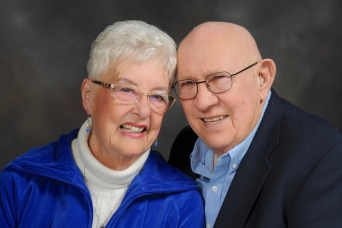
Dick was diagnosed with aortic valve stenosis, a condition in which the heart’s aortic valve narrows and obstructs blood flow from the heart to the rest of the body. Dick’s heart simply couldn’t pump enough blood to support the use of his body.
When aortic stenosis becomes severe enough, the only effective treatment is to replace the aortic valve. Until recently, this required open-heart surgery. But for some patients, there’s now another option: Transcatheter Aortic Valve Replacement or TAVR.
TAVR is a minimally-invasive surgical procedure that has been growing in use and is now part of the comprehensive valve program at Pomona Valley Hospital Medical Center’s (PVHMC) Stead Heart and Vascular Center. Gaurav Parikh, MD, an interventional cardiologist who joined PVHMC in September 2016, performed the Hospital’s first TAVR procedure November 9, 2016, with Dick being the first patient.
“TAVR requires a team approach, with an interventional cardiologist, a cardiac surgeon, an anesthesiologist, technicians, nurses and myself working together in the cardiac catheterization laboratory,” Dr. Parikh explained. “We thread a balloon catheter through the arteries, from the groin all the way up into the heart, similar to how we perform a cardiac catheterization procedure. The artificial heart valve is crimped on the balloon. Then, while the balloon pushes the leaflets of the diseased valve back, we carefully position the new valve and open it, sort of like an umbrella. The tension of the new valve keeps the leaflets of the old valve pushed back, which anchors the new valve in place. The new valve begins functioning immediately.”
The benefits of open heart surgery are dramatic. Instead of a seven-day hospital stay, patients undergoing TAVR go home within 48 to 72 hours. Because TAVR patients aren’t put on a heart-lung machine, they have less risk of complications after surgery. And instead of a large scar and several weeks or months of recuperation and rehabilitation, TAVR patients have minimal scarring and almost immediate recovery.
Not everyone is a candidate for the TAVR procedure, however, said Dr. Parikh. TAVR is currently approved only for patients with severe aortic stenosis who are moderate or high-risk candidates for a surgical procedure or have other co-morbidities or technical problems that make open-heart valve replacement less preferred. Patients must also undergo extensive testing to determine if their medical condition meets the criteria for TAVR and their arteries are large enough to accommodate the TAVR catheter.
For Dick Davison, the results of the TAVR procedure were dramatic. “Within six to eight hours after surgery he had immediate relief,” said Cathy Gilbertson, PVHMC’s Cardiac Valve Coordinator, who coordinates every aspect of TAVR patients’ care, from initial testing through follow-up after discharge. “His leg pain was gone.”
“It’s a true miracle,” said Dick’s wife Jayne. “He went from being a very sick man to a very healthy man in a matter of a few hours. Within a week he returned to doing the activities he’s always enjoyed, without any side effects, and he continues to get stronger every day. We cannot thank the whole Stead Heart Center team enough for their kindness, expertise, and skills. Thanks to them, we have many more years to enjoy life and each other.”
Fred Faught - Targeted Temperature Management (TTM)
When Fred Faught of La Verne read that U.S. News & World Report ranked
Pomona Valley Hospital Medical Center (PVHMC) as one of the best Hospitals
in Los Angeles, he told his wife Joanne to make sure he went there if
anything ever happened to him.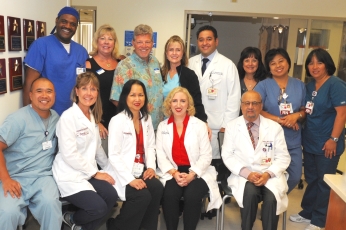
On May 24, 2017, something did.
Just after going to bed, Fred, 61, suffered a sudden cardiac arrest. Unlike a heart attack, in which blood flow to a portion of the heart is blocked, cardiac arrest is a malfunction of the heart’s electrical system, which causes the heart to suddenly and silently stop beating. Death can occur within minutes. Thankfully, Joanne noticed Fred’s condition almost immediately and paramedics arrived fast.
“The paramedics told me later that when they got to my house I was dead,” Fred said. “I had no pulse, and was completely unresponsive.” But after more than 200 chest compressions and seven defibrillator shocks, Fred’s heart began to beat again and he was rushed to PVHMC.
In the Emergency Department, a “Polar Alert” was called. A specially trained cardiac team responded and began following a detailed protocol to cool Fred’s body from the inside out, using a specialized therapy called Targeted Temperature Management (TTM). TTM has been shown to save lives while minimizing the potential long-term complications of cardiac arrest.
“A cardiac arrest stops all blood flow to the brain and cells begin to die,” explained Narid Ali Eltahir, MD. “When the patient is resuscitated and blood flow is reestablished, toxic materials that have built up in the blood can cause brain damage. There is also an inflammatory response that can cause further neurologic injury. TTM counteracts many of these destructive brain mechanisms.”
In the Hospital’s Cardiac Catheterization Lab, Interventional Cardiologist Guarav Parikh, MD inserted a cooling catheter into Fred’s femoral vein while Dr. Eltahir inserted another catheter into his artery to monitor blood pressure. A probe was also inserted to measure his internal temperature. Fred was then moved to the Cardiac Intensive Care Unit (CICU), where a chilled saline solution was circulated through the catheter in his vein, using a special machine. As Fred’s blood flowed over the cold catheter, his core body temperature quickly dropped to 33 degrees Celsius (91 degrees Fahrenheit).
On a ventilator, heavily medicated and closely monitored by the Hospital’s highly experienced CICU team, Fred was kept in a state of induced hypothermia for 24 hours. His family could only watch and wait.
“They told us not to talk because they didn’t want any stimulation going to his brain,” said Fred’s wife Joanne. “They wanted him very quiet so his body could rest. So my three adult children and I quietly stood by and prayed. Of course, I was terrified but I knew we’d gone to the right place and were in good hands.”
“Not being able to talk to him or touch him was hard,” said Fred’s daughter, Amanda. “But the nurses were absolutely amazing and so compassionate. That made it easier for us.”
Then, very slowly, Fred’s body was rewarmed. Finally, he opened his eyes and recognized his family. “I was very surprised to wake up in the hospital,” Fred said. “I didn’t remember anything that had happened.”
He also doesn’t remember suffering another cardiac arrest while still in the CICU. This time, he was treated without TTM. To treat the abnormal heart rhythm that was causing his cardiac events, he had surgery to receive a pacemaker and an automatic implantable cardioverter-defibrillator (AICD). The two devices now work together to keep Fred’s heart beating smoothly.
Today, Fred is finishing cardiac rehabilitation and has made a complete recovery, with no brain or long-term physical damage.
“I don’t have any restrictions or limitations on what I can do,” he said. “I walked about four miles a day before my cardiac arrest and I’m back up to that now. I’m very lucky. Only about two people out of a hundred survive what I went through. I’m so grateful to the paramedics and to the caregivers at PVHMC for what they’ve done and how well they treated my family.”
“We are so blessed,” said Joanne. “The staff at the Hospital is wonderful. This is what they’re trained for and they just did a remarkable job. They gave me great relief.”
Maria Gamboa - Stroke
The moment Virginia Elnahass heard her father’s frightened voice on the phone, she knew it was an emergency.
“He told me there was something wrong with my mom,” Virginia
said. “For my dad to be afraid, I knew it was serious. I didn’t
even let him finish his sentence before I hung up and called 911.”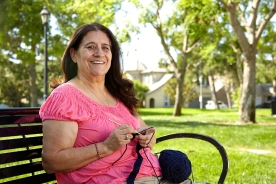
By the time Virginia got to her parents’ home in La Puente, paramedics had already rushed her mother, Maria Gamboa, to Pomona Hospital Medical Center (PVHMC).
“At the Hospital, they told us she had suffered a stroke,” Virginia said. With a stroke, receiving fast medical attention is crucial to survival and a good recovery. But no one knew exactly when Maria’s stroke had occurred.
“It was a ‘wake-up’ stroke,” explained PVHMC interventional neurologist Nazli Janjua, MD. “The last time anyone had seen Maria in a normal state was the night before. The stroke could have been going on for hours.”
Maria had slept in the guest room, feeling sick and not wanting to disturb her husband, Armando. He found her on the floor the next morning, partially paralyzed and barely able to talk.
When Los Angeles County Fire Department paramedic Michael Noriega arrived, he knew immediately it was a stroke and that time was of the essence. Yet when dispatch gave him a choice of two hospitals, he chose PVHMC over the one that was slightly closer.
“I’m familiar with Pomona from taking other patients there,” he said. “I knew the stroke team would be waiting, and that she would get rapid intervention.”
After an emergency MRI, Maria was sped to the Hospital’s state-of-the-art Neuro-Interventional Lab, where Dr. Janjua used thrombectomy, an advanced, minimally invasive neurosurgical technique, to remove the clot. Guided by digital subtraction angiography that mapped Maria’s cerebral vasculature (brain), Dr. Janjua threaded a catheter from an artery in Maria’s leg up through her neck and into the blood vessels of her brain to the precise location of the blockage. Then she eased a device up through the catheter to suction out the clot, restoring blood flow.
“Her improvement was immediate, while she was still on the table,” Dr. Janjua said. But that night, while being monitored by nurses in the Intensive Care Unit (ICU), Maria suffered another life-threatening stroke – in exactly the same spot as the first.
“For this to happen is very rare,” said Dr. Janjua, who rushed back to the Hospital to perform a second thrombectomy. “With a stroke, a clot forms in the body and travels to a blood vessel in the brain. For a clot to travel randomly to the same blood vessel twice within such a short period of time is pretty unusual.”
Despite additional damage from the second stroke, today Maria is doing well. After rehabilitation and eight months of therapy, she is back to knitting, reading, doing puzzles and one of her favorite activities, taking walks in the park with her daughter and grandson.
“She still needs a cane and sometimes a walker,” Virginia said. “But she’s come a long way. My family is very impressed with the care my mom received at Pomona Valley Hospital. Everyone was very attentive and the nurses were very understanding and comforting to our family. They let us visit her in the ICU whenever we wanted and stay as long as we wanted. And Dr. Janjua was our miracle doctor. We had nothing but a great experience there.”
“What Maria’s story exemplifies is that you never give up,” Dr. Janjua said. “It would have been easy to say ‘well, the stroke happened last night and with so much time elapsed, there’s not much we can do.’ In fact, the risk sometimes does outweigh the benefit with thrombectomy. But in Maria’s case, everyone, from the paramedics, responding to the 911 call, to the nurses who were on top of everything and the support teams, worked hard to give her a good outcome. To me, she is a reminder that you never give up and you give everybody 110 percent.”
Tony Giordano - Bypass
Every year or so, Tony Giordano undergoes a simple surgical procedure at Pomona Valley Hospital Medical Center (PVHMC) to drain excess fluid from his middle ear. Though routine, the procedure requires general anesthesia. Last year, instead of being given a clean bill of health afterward, Tony got sobering news.
“The anesthesiologist said my heart was going a mile a minute,”
recalled Tony, 74. Further tests revealed two coronary arteries had 100 percent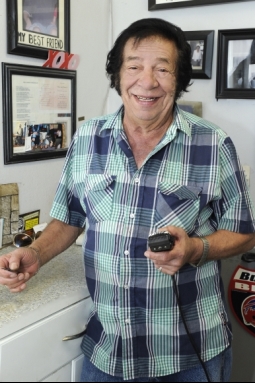 blockages and a third had a 75-80 percent blockage.
blockages and a third had a 75-80 percent blockage.
Tony was scheduled for heart surgery but postponed it for several months when he severely injured a leg muscle. Later, Tony postponed the surgery again when he couldn’t find someone to take his place in the Claremont barbershop he’s run for 23 years.
But when Tony developed a blood clot in his leg, his doctor didn’t mince words. “He scared me,” Tony said. “He told me if I had a heart attack right now he couldn’t save me. I went to the Hospital right away.”
Dr. Sarika Jain performed triple bypass surgery on Tony in September 2015 and Tony spent five days in the Hospital. “They treated me like a king when I was in there,” he said. “The whole Hospital was fantastic.”
Two weeks after his surgery, Tony was back at work and going to Cardiac Rehabilitation at PVHMC. He’s thankful the Hospital has been there for him throughout the years – especially this time.
“Pomona Valley Hospital saved my life,” he said.
Sara Treiger - Bypass
Husband and Wife Undergo Open Heart Surgery at PVHMC Four Months Apart
Last October, Sara Treiger, 61, was driving to the homecoming game at the
high school where she works when the bad headache she’d been having
all week came back. This time it was accompanied by chest pain and numbness
in her left hand. Abandoning the game, Sara instead drove herself to an
urgent care clinic, which promptly called an ambulance to take her to
the nearest hospital.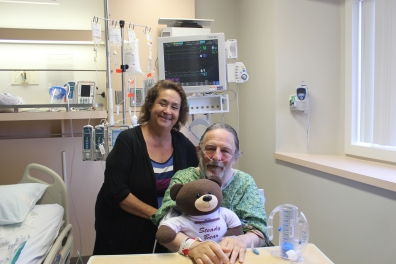
The closest hospital was not Pomona Valley Hospital Medical Center (PVHMC) but Sara insisted she be taken there. “They know me,” she said of PVHMC. “I’ve had 40 years’ of experience with that hospital and I know that when there’s an emergency, they’ll take care of you.”
Once Sara was at PVHMC, tests revealed that she had four blocked coronary arteries. She underwent open heart surgery a few days later. “Everything was absolutely the best,” Sara said, both of her surgery, performed by Sarika Jain, MD, and the follow-up care she received from Eric Keyser, MD. “The care from both doctors was great.”
Sara delayed cardiac rehabilitation for a few months. In late January 2015, just as she was about to begin rehabilitation, her husband Irving, 74, went in for a routine check-up. When he failed an important heart stress test, his doctor scheduled him for an angioplasty at PVHMC. The couple was stunned when the procedure revealed that Irving had the exact same condition Sara had just been treated for; four blocked coronary arteries that required open heart surgery.
“It was overwhelming,” Sara said. “If it wasn’t for God and my family and the church, I wouldn’t have survived it. I put my trust in the doctors. They know what they’re doing.”
Dr. Keyser performed Irving’s surgery on February 10, using the new “beating heart” technique that avoids the use of a heart-lung machine. Two weeks later Irving was back home and able to walk without a cane or walker.
In March the couple, who have been married 29 years, began cardiac rehabilitation together.
“I love Pomona Valley Hospital,” Sara said. “My three children were born there and my grandchild was born there; of all the hospitals my family and I have been to, Pomona is one of the best and the most caring. I call this place home.”
Brenda Rodriguez - Stroke
Brenda Rodriguez, 21, doesn’t remember much about the night of August 14, 2015, except that her head hurt as she walked toward the bathroom at home.
What her sisters, Stephanie and Sheila, remember is that Brenda was acting
strangely. After running to get their mom, Stephanie called 9-1-1. A short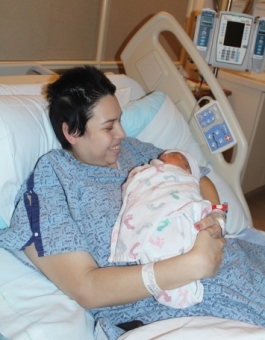 time later, Brenda – not quite six months pregnant – arrived
in the Emergency Department at Pomona Valley Hospital Medical Center (PVHMC),
in a coma.
time later, Brenda – not quite six months pregnant – arrived
in the Emergency Department at Pomona Valley Hospital Medical Center (PVHMC),
in a coma.
Doctors determined that Brenda had a ruptured arteriovenous malformation (AVM) on the right side of her brain and rushed her into surgery. An AVM is a tangle of abnormal blood vessels in the brain, affecting less than 1 percent of the population. Brenda was born with the condition but didn’t know it. When her weakened blood vessel burst, it caused bleeding into her brain – a hemorrhagic stroke.
“When I saw her for the first time she was in the intensive care unit (ICU), comatose and on a respirator,” said M. Hellen Rodriguez, MD, Medical Director for Maternal-Fetal Medicine and Chair of PVHMC Foundation. “We weren’t sure she was going to survive.” In fact, Brenda said later that doctors had given her only a 4 percent chance of living.
Dr. Rodriguez, a perinatologist, was part of a team of specialists caring for Brenda, which included an obstetrician, neurologist, neurosurgeon, interventional neurologist, nurses, and therapists. This comprehensive team stabilized Brenda, and even though she was still in a coma, Brenda slowly began to recover, while her baby continued to grow inside her.
After 45 days in the Hospital, including three weeks in a coma, Brenda woke up, with her family around her. Weeks of therapy helped her regain her speech and learn to walk again. After six weeks in the Hospital, Brenda went home to continue her recovery. On December 1, 2015, she gave birth to Christopher Aiden Rodriguez, a healthy, seven-pound baby boy.
“The moment I heard my child cry was the best thing that happened in my life,” Brenda said. “I have so much joy. I’m so thankful to everyone at Pomona Valley Hospital Medical Center for helping me and helping bring my child into the world.”
Brenda’s medical team is thankful they were there to help Brenda through this major crisis.
“To have witnessed Brenda’s full recovery and the birth of her healthy baby was amazing,” Dr. Rodriguez said. “I feel so privileged to have been part of this miracle.”
Cecil Palmer - Bypass
A professional dancer, choreographer, and entrepreneur who once worked
with Ginger Rogers, Cecil Palmer, 69, has always been thin, fit and healthy.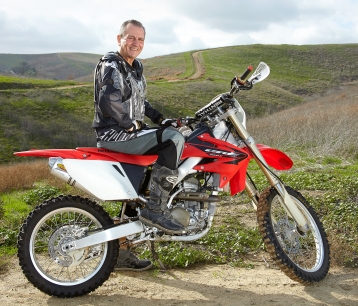 In addition to earning a brown belt in Kenpo Karate and competing in tennis
tournaments most of his life, he exercises almost every day. And dirt
bike riding is a passion he turned into a family sport that he and his
six kids enjoy together.
In addition to earning a brown belt in Kenpo Karate and competing in tennis
tournaments most of his life, he exercises almost every day. And dirt
bike riding is a passion he turned into a family sport that he and his
six kids enjoy together.
So it’s no wonder that Cecil, his family, and even his doctor were shocked when tests last fall to check his heart health revealed a nearly complete blockage in a main coronary artery.
“I’ve never had any indication of heart issues, other than a heart murmur,” Cecil said. “I’ve been in extremely good shape all my life because of what I’ve done.”
He’s done a lot. Proficient in many different dance styles, he performed in films and television throughout the 1960s and ’70s, including Blazing Saddles, Bedknobs and Broomsticks, and several Elvis Presley movies, to name a few. He served as assistant choreographer for the Sonny and Cher Comedy Hour and worked on a handful of other TV variety shows.
In 1976, he retired from the entertainment industry to manufacture custom, two-seater sports cars known as The Auburn 876 Speedster. He still works today as an independent sales and marketing working hand-in-hand with business owners to help build their businesses. On weekends, he likes to load up the dirt bikes and head out to the Mojave Desert with friends or family.
“You need a tremendous amount of endurance to ride as fast as you can in the open desert, over hills and rough terrain,” he said. “When we found out I had a heart blockage, my family and I and everyone else were just blown away.”
It was nagging allergies that sent him to the Pomona Valley Health Center at Chino Hills last fall. During the exam, his doctor grew concerned about Cecil’s heart murmur and referred him to Pomona Valley Hospital Medical Center (PVHMC) cardiologist Nitanth Vangala, MD. Cecil didn’t take the referral recommendation seriously but his significant other, Jennifer, insisted and scheduled the appointment. Dr. Vangala ordered a complete set of tests, including an angiogram, which revealed the blockage.
“It was in an artery they call ‘the widow maker,’” Cecil said. “If that one becomes 100 percent blocked there’s no recovery – you’re done, pretty much. I had a 90 percent blockage.”
In December 2015, Cecil underwent coronary bypass and heart valve replacement surgery by surgeon Guangqiang Gao, MD, at PVHMC. The successful procedures were followed by several months of cardiac rehabilitation. Cecil is not as active as ever.
Cecil says he owes his life to the incredible staff, teamwork, and thorough care he received.
“Dr. Gao did a phenomenal job; his team was absolutely incredible. And Dr. Vangala did a full work-up so he could see exactly what was going on with my heart,” he said. “If not for the angiogram, we would never have known about the blockage. I just can’t express how thankful I am to Pomona Valley Hospital for the excellent care. ”
Gary Brandt - Stroke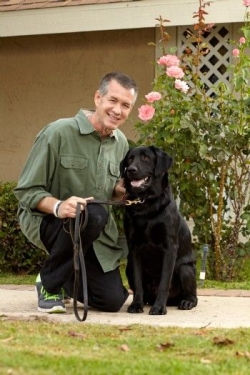
Gary Brandt's life stopped on a dime when his wife found him on the floor of their room, his speech was slurred and incapable of movement. Clear signs of a stroke. She called 9-1-1 and Gary was rushed to Pomona Valley Hospital Medical Center where a large clot, blocking blood flow to the right side of his brain, was discovered. A procedure was used to extract the clot, saving Gary from paralysis. Now Gary is back at work and enjoying time with his family and their beautiful black lab.
Mr. Miller - Cardiac Surgery
I want to pay my highest regards, compliments, and praise to your leadership in directing one of the finest of hospitals I've ever been in.
On Nov. 15, I was at my yearly doctor checkup at the Chino Hills facility with Dr. Wohlert who has replaced Dr. Fontan, my former physician. I told her of some chest pain I had recently that happens only when on a brisk walk. She ran an EKG a couple of times and they both came back with an inverted T wave which you may or may not know is a huge red flag in the world of cardiology. She consulted Dr. Mathiau of your top-notch cardio team and he said to get me to the main hospital ASAP which my wife and I did. My wife also works at PVHMC she is a Nurse Manager in the women's center. Her name is Susan.
Anyway, the cardiac team quickly determined through investigative questioning and 9 more EKG's that a deadly widow maker heart attack was imminent because the EKG's were progressively getting worse.
I then witnessed a well-greased, fine-tuned, everybody on the same page team of intuitive cardiologists, nurses, Cath Lab Crew, and support staff urgently swing into action and literally through their efforts and expertise, saved my life! Also, the cardio recovery, as well as the admitting crew, deserve recognition for their urgent diligence. They were all very attentive, helpful, courteous, patient, and very friendly.
Please share this note with all of them as well the rest of the hospital staff so everybody can share in my joy at the second chance they've given me.
I owe my life to Pomona Valley Hospital Medical Center.
THANK YOU ALL!!
Mr. and Mrs. Caster - Heart Failure
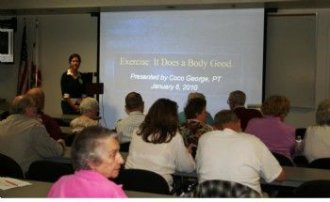 "I have been diagnosed with CHF, and had a Pacemaker installed in
2001. My wife and I were then invited me to join the Heart Failure Classes,
and I did so reluctantly. Since that first class, my wife and I have attended
her classes on a regular schedule. Each class is professionally prepared,
often with guest speakers, experts in their fields, complete with visual
aids and handouts. My wife also has a heart condition and is receiving
very valuable information at the meetings. The information is always presented
in a professional, interesting, understandable and educational way."
"I have been diagnosed with CHF, and had a Pacemaker installed in
2001. My wife and I were then invited me to join the Heart Failure Classes,
and I did so reluctantly. Since that first class, my wife and I have attended
her classes on a regular schedule. Each class is professionally prepared,
often with guest speakers, experts in their fields, complete with visual
aids and handouts. My wife also has a heart condition and is receiving
very valuable information at the meetings. The information is always presented
in a professional, interesting, understandable and educational way."
Photo: Guest speaker from Physical Therapy speaking at CHF class.
Ms. Butler - Heart Failure
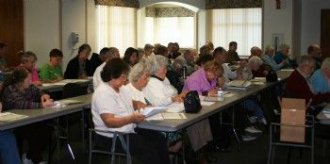 "In 2007 and 2008 I was in the hospital with heart problems. I really
didn't know how to handle the problems I was left with. Then I was invited
to come to the monthly heart failure meetings. There has been very helpful
in explaining heart failure, how to care for heart failure, and helping
with a diet including low salt recipes."
"In 2007 and 2008 I was in the hospital with heart problems. I really
didn't know how to handle the problems I was left with. Then I was invited
to come to the monthly heart failure meetings. There has been very helpful
in explaining heart failure, how to care for heart failure, and helping
with a diet including low salt recipes."
Photo: Group CHF lecture and lunch
